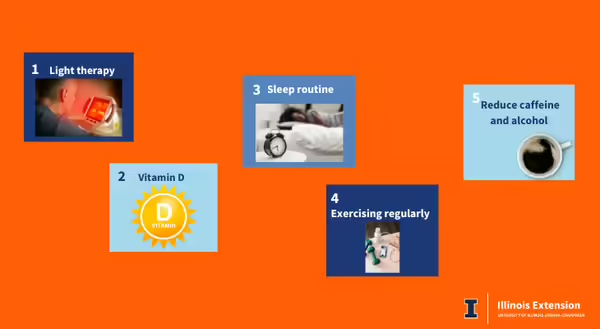
Seasonal affective disorder (SAD) is a kind of sadness that often manifests itself in the late autumn and early winter. This is because the reduced quantity of daylight at certain times of the year influences the body's circadian clock and, in turn, serotonin production. Depression, fatigue, and an inability to sleep have all been linked to changes in the amount of daylight we're exposed to, which may have a substantial influence on our mental health.
Familiarity with the many elements that contribute to seasonal depression and the symptoms that appear may improve our ability to diagnose and treat the condition in its early stages. That is why it is crucial that you have a thorough understanding of seasonal depression before you start making any preparations.
In this post, we'll discuss a variety of approaches one might take to mitigate the effects of seasonal sadness brought on by shorter days and less sunlight:
Light therapy
Exposition to bright light to mimic the effects of natural sunlight is one of the most effective therapies for seasonal affective disorder (SAD). It's worth considering whether using a light therapy lamp or lightbox for half an hour first thing in the morning may be good for you. It has been shown that using one of these gadgets, which emits a certain spectrum of light, may improve one's mood and alleviate some of the symptoms of depression.
Vitamin D
During the day, you may make use of the natural light by leaving the curtains open, spending time outdoors if the weather permits, and placing yourself near any windows in the room. In addition to improving your mood, this will also boost your productivity. To maximize your time, try to schedule a few short breaks during the day during which you may go outside and get some vitamin D.
Sleep routine
Our natural sleep-wake cycle may be thrown off by changes in the amount of sunlight we're exposed to, leading to sensations of fatigue and irritation. One solution is to establish a regular sleep regimen in which you go to bed and wake up at the same time every day. In this pattern, you will always retire to bed at the same hour. Your sleeping environment should be dark and quiet for you to promote restful sleep. Curtains that completely block out the light from the windows are a good idea if you need to do this work at night. If that is not an option you have available, you can always try a sleep mask.
Exercising regularly
It has been shown to help with the treatment of depression, and seasonal affective disorder (SAD) may benefit from this. Endorphins are naturally produced by our body during exercise and have the impact of improving our mood. Do things that you enjoy, like going on walks outside, doing indoor yoga routines, or working out at a gym. If you suffer from seasonal affective disorder (SAD), one strategy for managing your symptoms is to exercise regularly.
Avoid caffeine and alcohol
These are two substances that should be avoided or reduced due to their tendency to aggravate the symptoms of anxiety and depression and disturb your sleep habits.
It is crucial to keep a watchful eye on your health all year, but especially during the winter months. Visit My Plate for information about a good and balanced diet for you and your family. Let us not only welcome the season with courage and optimism, but also let's take measures to ensure a good state of our mental health throughout. Even though the dwindling daylight hours might be taxing, there are steps we can take to forewarn ourselves and lessen the impact of seasonal affective disorder.
Resources:
About the Author: Andrea S. Fanta is a statewide mental health Extension specialist. As part of the Integrated Health Disparities program, she provides evaluation, development, and implementation of programming to increase social justice in mental health. She has a master's degree in occupational therapy, and she is currently a doctoral fellow in the Department of Human Development and Family Studies at University of Illinois Urbana-Champaign. Andrea has vast experience working with families and actively collaborates with national and local coalitions to strengthen our communities.
The IHD program tackles health issues with an integrated lens of physical, mental, and community health, providing programs and resources to address health inequities.